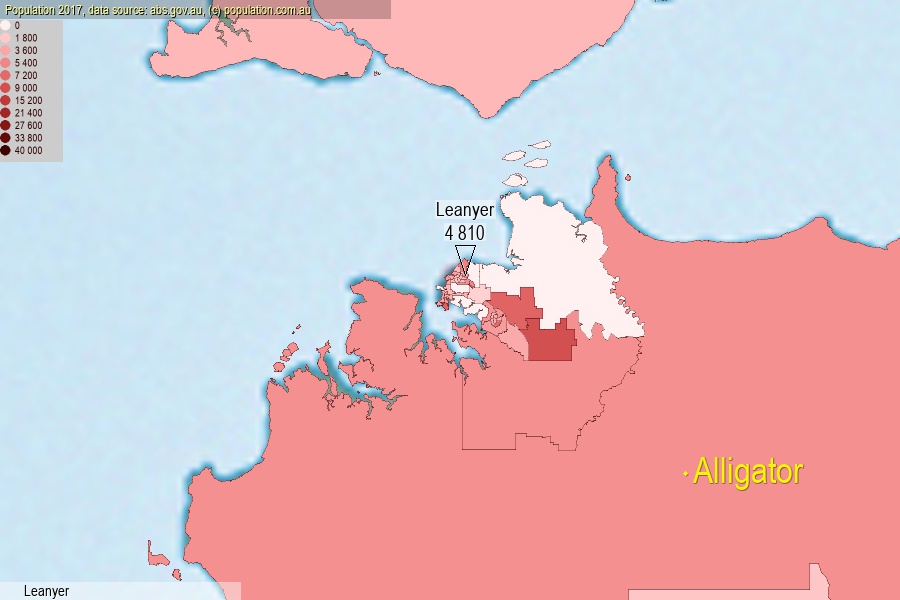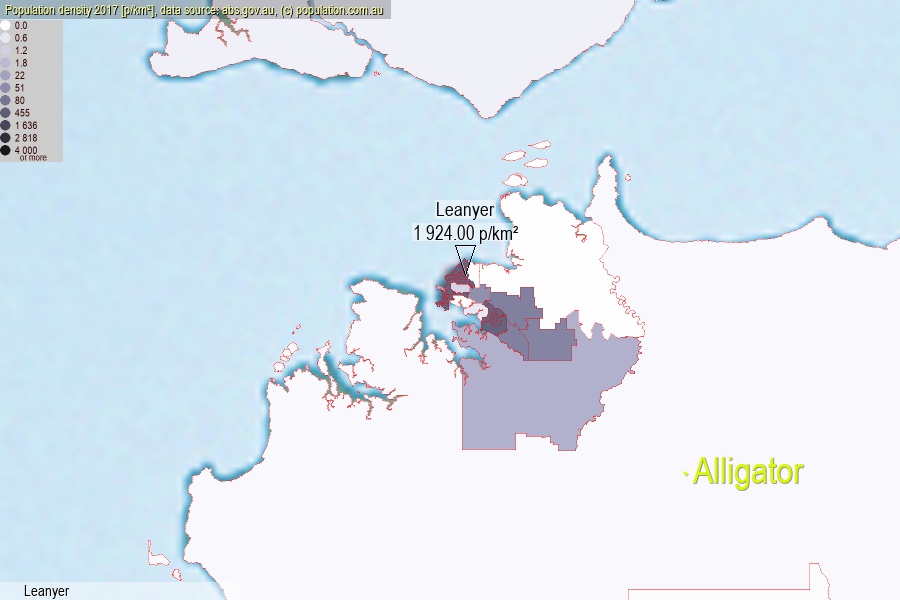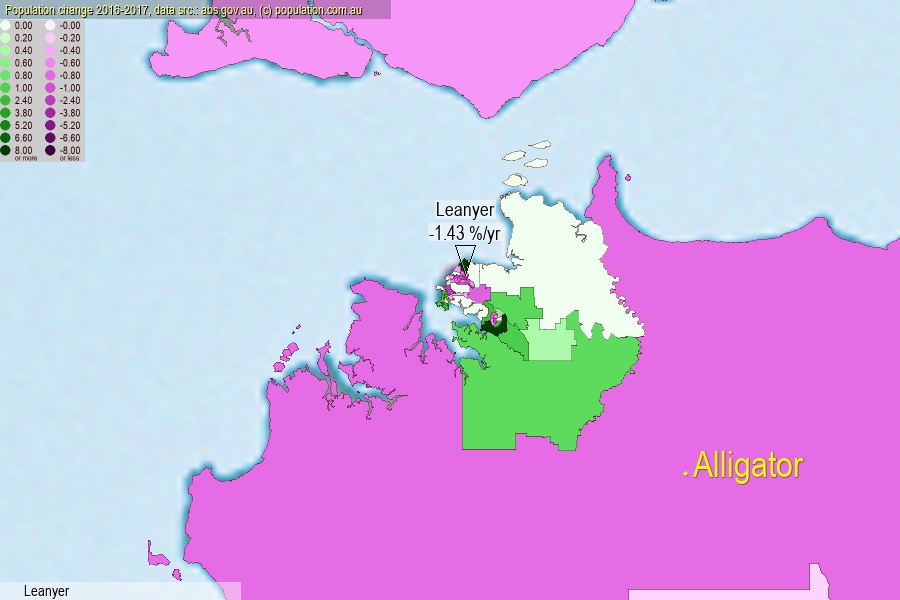 population.com.au
population.com.auLast official estimated population of Leanyer (as Statistical Area Level 2) was 4 810 people (on 2017-06-30)[2]. This was 0.02% of total Australian population and 1.95% of NT population. Area of Leanyer is 2.50 km², in this year population density was 1 924.00 p/km² . If population growth rate would be same as in period 2016-2017 (-1.43%/yr), Leanyer population in 2025 would be 4 285. [0]



Click to enlarge. Leanyer is located in the center of the images.
Population [people], population density [p./km²] and population change [%/year] [2]
View borders » (new window) [4]
[1991-1992] +1.89 %/Yr.
[1992-1993] -0.67 %/Yr.
[1993-1994] +0.06 %/Yr.
[1994-1995] +0.77 %/Yr.
[1995-1996] +0.90 %/Yr.
[1996-1997] -0.42 %/Yr.
[1997-1998] -0.67 %/Yr.
[1998-1999] -0.94 %/Yr.
[1999-2000] -0.06 %/Yr.
[2000-2001] -0.10 %/Yr.
[2001-2002] -1.80 %/Yr.
[2002-2003] -1.84 %/Yr.
[2003-2004] -1.35 %/Yr.
[2004-2005] -0.53 %/Yr.
[2005-2006] +0.12 %/Yr.
[2006-2007] +1.25 %/Yr.
[2007-2008] +1.41 %/Yr.
[2008-2009] +0.98 %/Yr.
[2009-2010] +0.53 %/Yr.
[2010-2011] -0.73 %/Yr.
[2011-2012] +0.44 %/Yr.
[2012-2013] -0.12 %/Yr.
[2013-2014] -0.79 %/Yr.
[2014-2015] -1.43 %/Yr.
[2015-2016] -1.61 %/Yr.
[2016-2017] -1.43 %/Yr.
[0] Calculated with linear interpolation from officially estimated population
[1] Read more about SA2 and Australian Statistical Geography Standard (ASGS) on abs.gov.au
[2] Population data from Australian Bureau of Statistics (Population and density: 2017; change: 2016-2017)
[3] Digital Boundaries: Australian Statistical Geography Standard (ASGS) 2016.
[4] Border coordinates are simplifyed using Ramer-Douglas-Peucker algorithm.